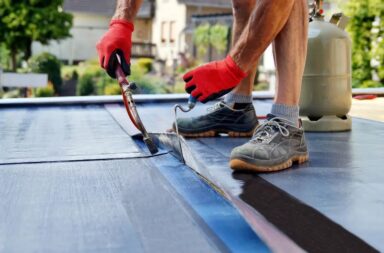During a building inspection major components that inspectors pay close attention to are the heating, ventilation, and air conditioning (HVAC) system. This crucial system is responsible for maintaining an environment and plays a vital role in the energy efficiency of a building.
- Dirty or clogged air filters
Air filters are essential components of an HVAC system to remove airborne particles, such as dust, pollen, and other contaminants, from the indoor air. However, filters clogged, reducing the system’s efficiency and leading to higher energy costs and poor indoor air quality. During an inspection, the building inspector will check the air filters and assess their condition. If they appear excessively dirty or clogged, the inspector replaces new filters to improve the system’s performance and ensure proper airflow.
- Refrigerant leaks
Refrigerant is a crucial component of an air conditioning system, as it is responsible for absorbing heat from the indoor air and transferring it outside. However, refrigerant leaks occur due to various reasons, such as improper installation, wear and tear, or damage to the system’s components. Building inspectors use specialized equipment to detect refrigerant leaks, as these leaks to identify visually.
- Ductwork issues
The ductwork in an HVAC system is responsible for distributing conditioned air throughout the building. However, over time, ductwork develops issues such as leaks, insulation deterioration, or blockages caused by debris or pest infestations.
During an inspection, the inspector will examine the ductwork for any visible signs of damage or leaks. They use specialized tools to measure airflow and identify potential blockages or restrictions issues are found, the inspector repairs or ductwork replacement to improve the system’s efficiency and indoor air quality.
- Thermostat problems
The thermostat is the control center of an HVAC system responsible for regulating the temperature and operation of the system based on user settings. However, thermostats malfunction or become inaccurate over time, leading to issues with temperature regulation and energy efficiency. Building inspectors will test the thermostat to ensure it is functioning reading and responding to temperature changes. If problems are detected, the inspector may recommend replacing the thermostat or recalibrating it to improve the system’s performance navigate here for building inspections Sydney.
- Electrical issues
HVAC systems rely on electrical components, such as motors, control boards, and wiring, to operate. Over time, these components are worn or damaged, leading to potential electrical issues that impact the system’s performance or even pose safety risks. During an inspection, the inspector will examine the electrical components of the HVAC system for any signs of wear, damage, or improper installation. They may also check for loose connections or wiring issues that could cause short circuits or other electrical hazards. If any electrical issues are identified, the inspector repairs or replacements to system’s safe and efficient operation.
- Condensate drain clogs
Air conditioning units produce condensation during the cooling process, and this moisture is drained away through a condensate drain line. However, these drain lines are clogged with dirt, debris, or algae growth, leading to water backups and potential water damage. Building inspectors will check the condensate drain lines for any signs of blockages or clogs. They test the drainage system to proper water flow. If clogs or blockages are found, the inspector cleans or replaces the affected components to prevent water damage and proper drainage.


